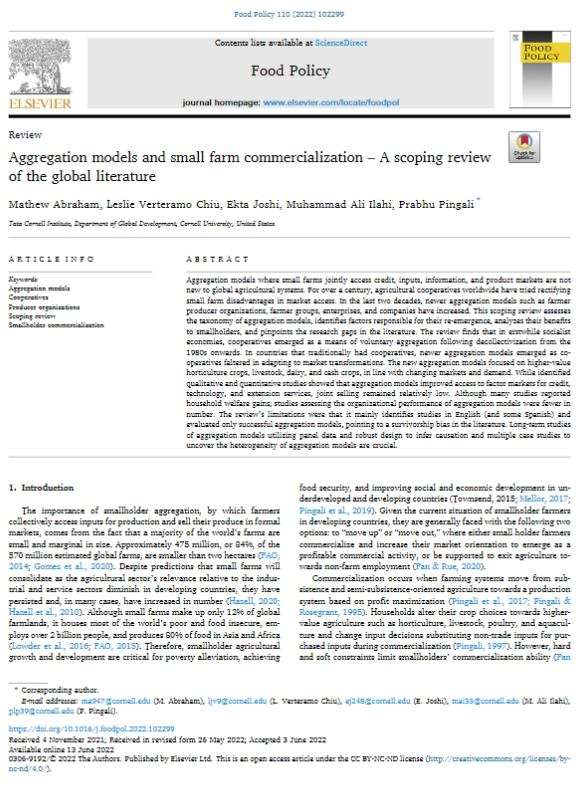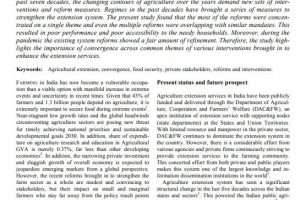Aggregation models where small farms jointly access credit, inputs, information, and product markets are not new to global agricultural systems. For over a century, agricultural cooperatives worldwide have tried rectifying small farm disadvantages in market access. In the last two decades, newer aggregation models such as farmer producer organizations, farmer groups, enterprises, and companies have increased. This scoping review assesses the taxonomy of aggregation models, identifies factors responsible for their re-emergence, analyzes their benefits to smallholders, and pinpoints the research gaps in the literature. The review finds that in erstwhile socialist economies, cooperatives emerged as a means of voluntary aggregation following decollectivization from the 1980s onwards. In countries that traditionally had cooperatives, newer aggregation models emerged as cooperatives faltered in adapting to market transformations. The new aggregation models focused on higher-value horticulture crops, livestock, dairy, and cash crops, in line with changing markets and demand. While identified qualitative and quantitative studies showed that aggregation models improved access to factor markets for credit, technology, and extension services, joint selling remained relatively low. Although many studies reported household welfare gains; studies assessing the organizational performance of aggregation models were fewer in number. The review’s limitations were that it mainly identifies studies in English (and some Spanish) and evaluated only successful aggregation models, pointing to a survivorship bias in the literature. Long-term studies of aggregation models utilizing panel data and robust design to infer causation and multiple case studies to uncover the heterogeneity of aggregation models are crucial.
Aggregation models and small farm commercialization – A scoping review of the global literature
July 6, 2022
129 Views
2 Min Read

-
Share This!




Add Comment